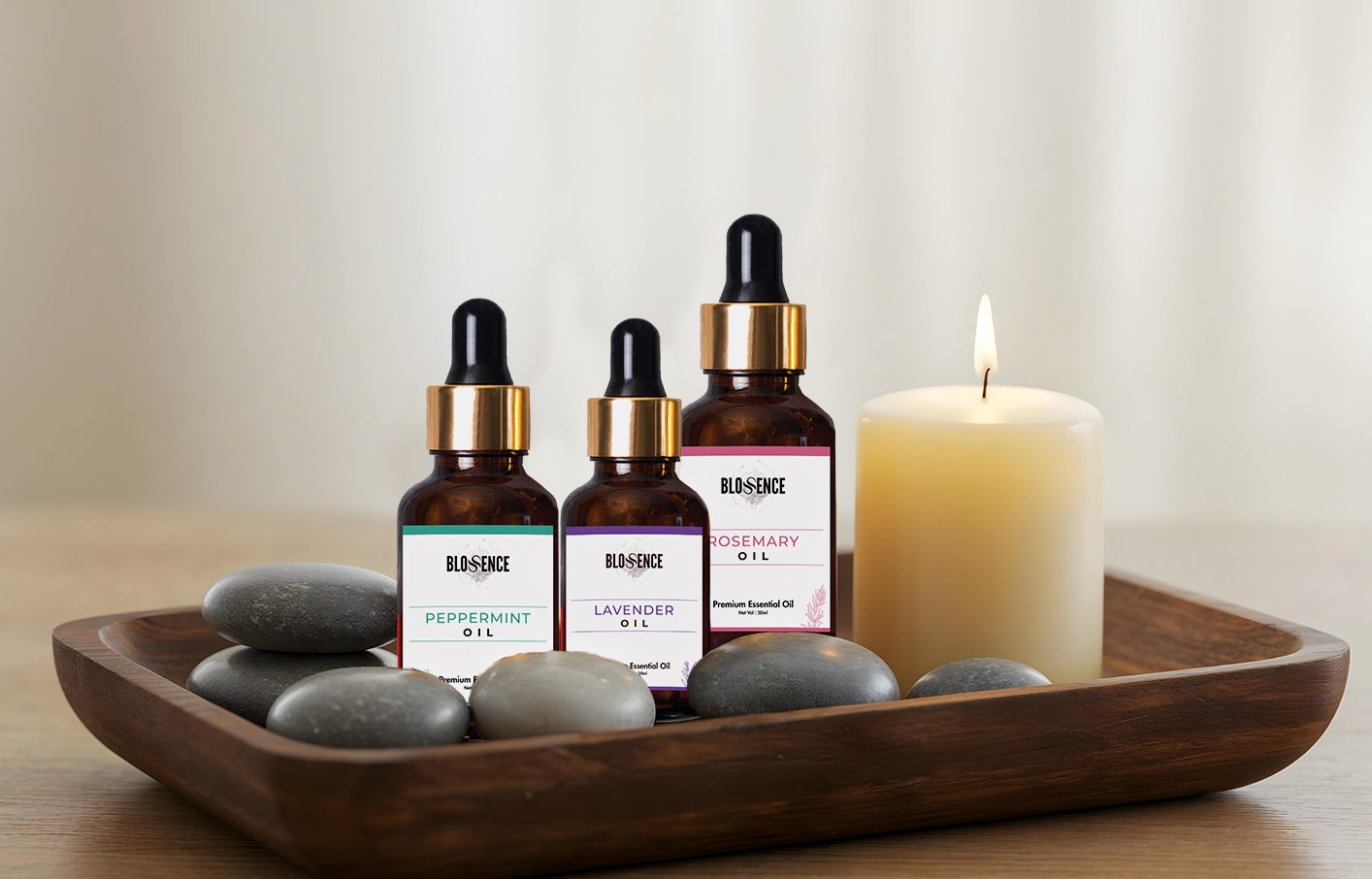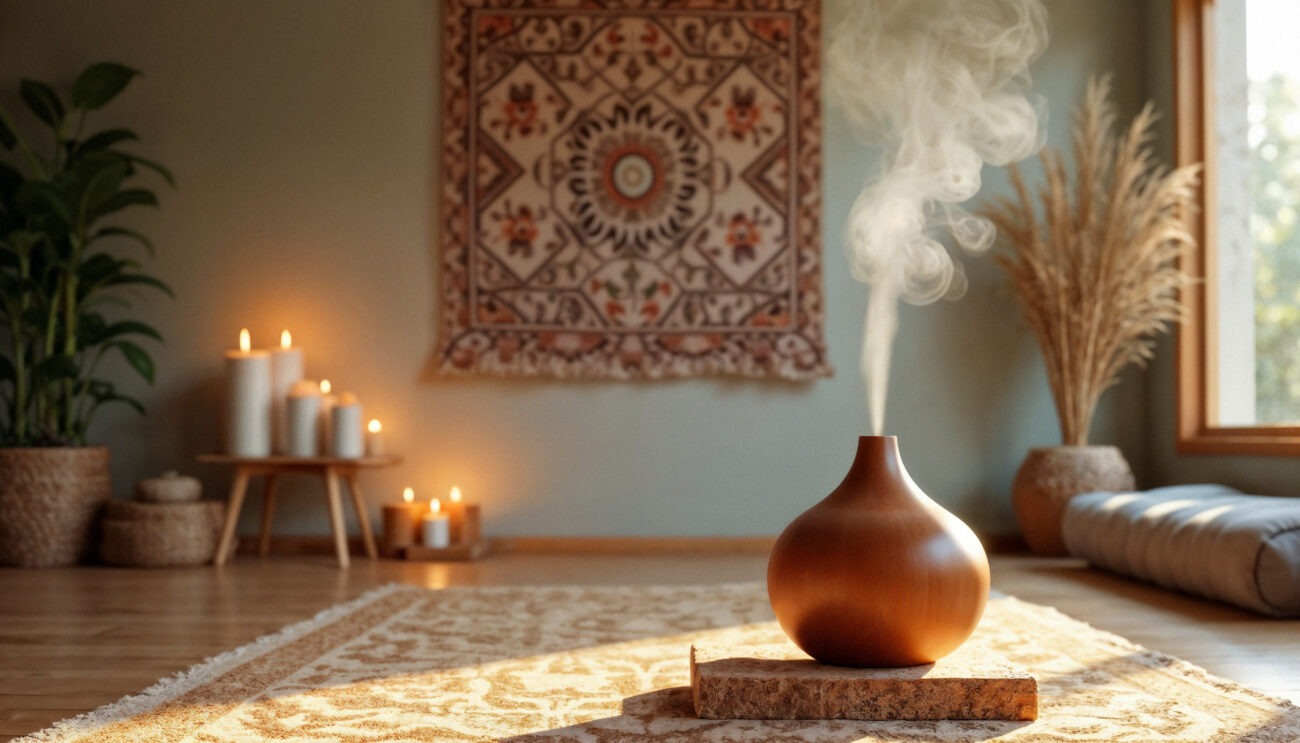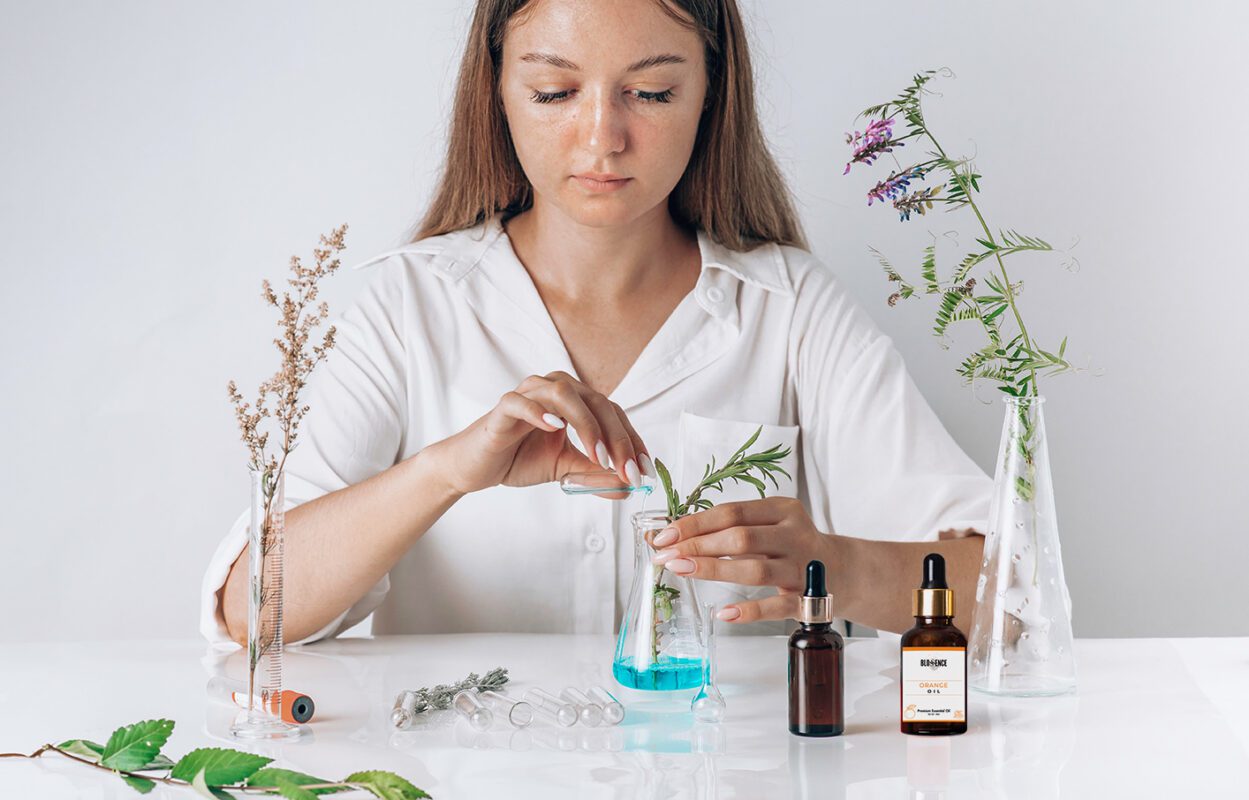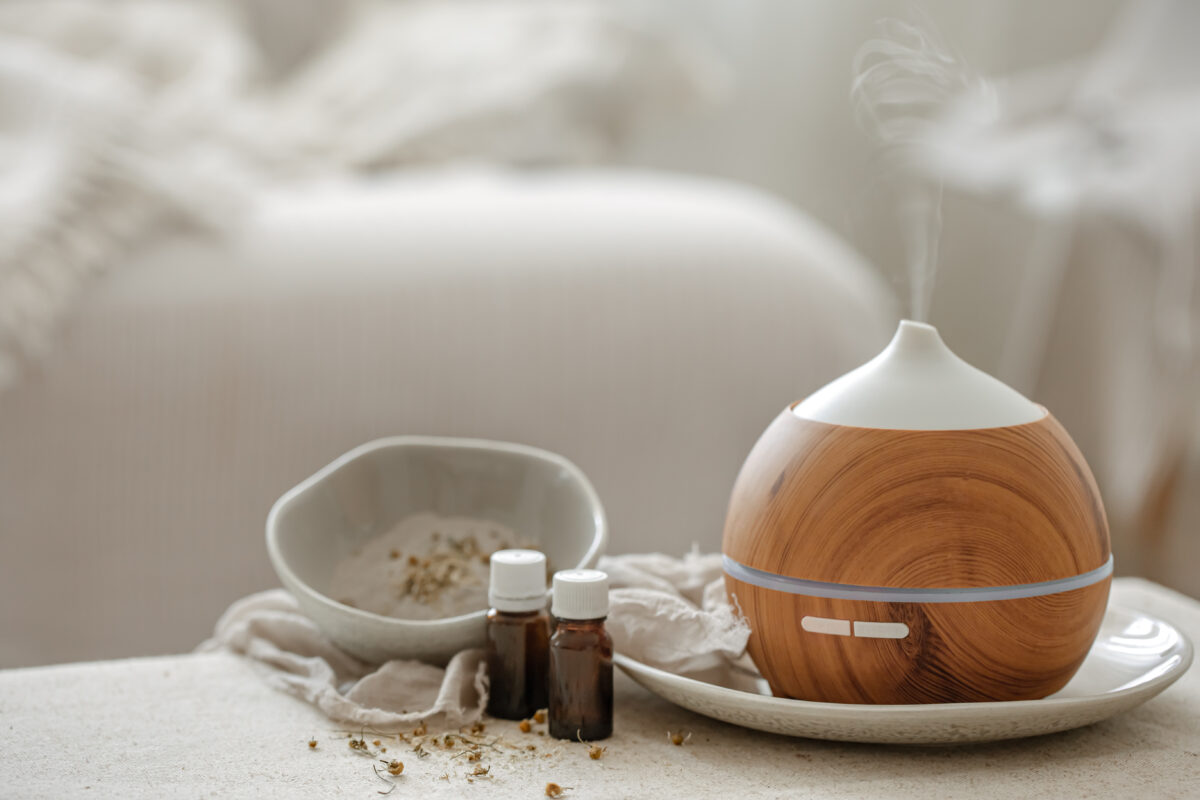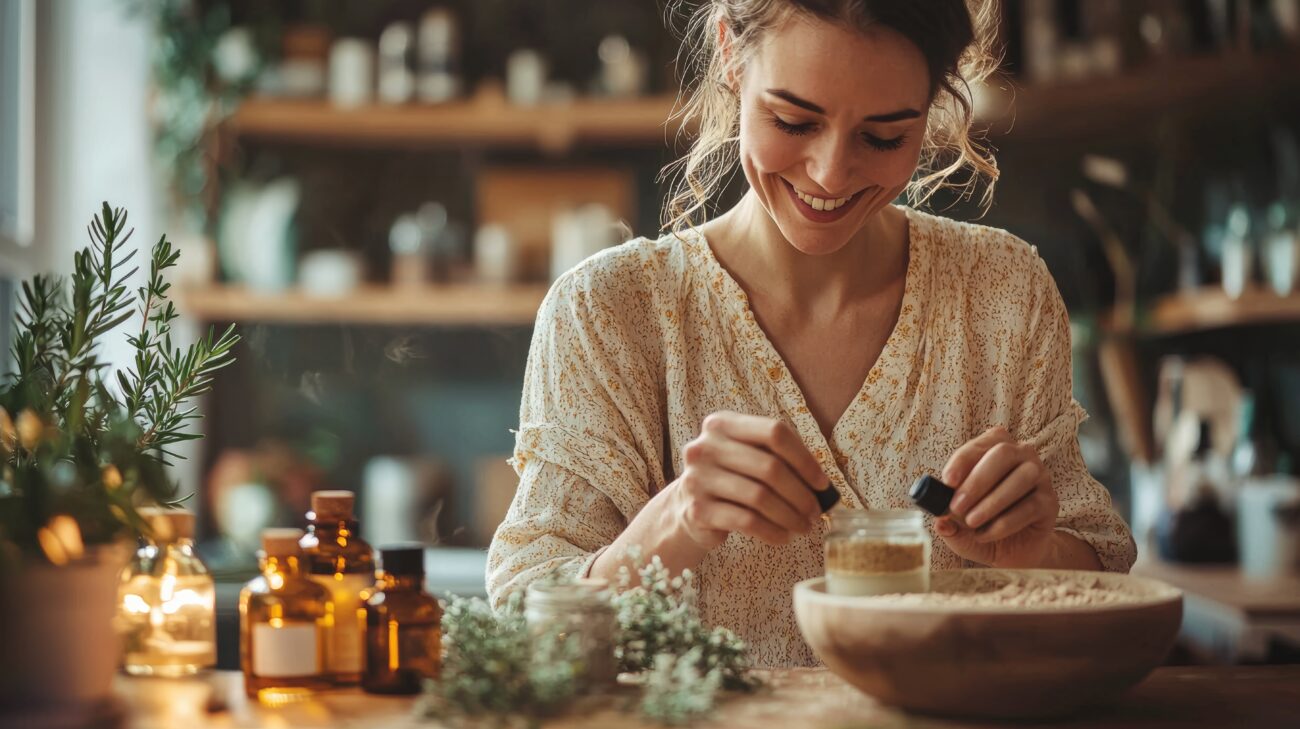Essential oils are nature’s most concentrated plant extracts—potent, delicate, and powerful.
But they’re also sensitive to:
- Light
- Heat
- Oxygen
- Moisture
Without proper care, your pure oils can lose their potency, oxidize, or even become unsafe to use.
That’s why Blossence pays close attention to packaging—and why you should, too.
🧪 How Essential Oils Can Degrade
Over time, oils exposed to the wrong environment can:
- Change color
- Lose aroma strength
- Become thick or sticky
- Cause skin irritation due to oxidation
Some oils (like citrus) degrade faster than others. Proper storage keeps their scent, safety, and therapeutic power intact.
🔐 The 5 Golden Rules of Essential Oil Storage
1. Use Dark Glass Bottles Only
Amber or cobalt blue bottles block UV light, which breaks down plant compounds.
📦 Blossence oils come in dark glass with dropper caps for this exact reason.
2. Keep Away from Direct Sunlight
Windowsills, car dashboards, or open shelves with sunlight = big no.
Store in drawers, cabinets, or closed wooden boxes.
3. Avoid Heat and Humidity
Do not store near:
- Stoves
- Showers
- Heaters
- Sun-exposed desks
🌡 Room temp is fine. Cool and dry is ideal.
4. Seal Bottles Tightly After Each Use
Oxygen speeds up oxidation.
Always close the cap tightly and avoid leaving droppers exposed.
5. Label + Date Your Oils
Essential oils don’t last forever. Use masking tape or stickers to:
- Mark open dates
- Group oils by usage (daily / body / diffuser)
It helps rotate and use before they lose effectiveness.
📍 Where to Store Your Oils (and Where Not To)
| DO Store Here | DON’T Store Here |
|---|---|
| Drawer with no direct light | Bathroom shelves |
| Wooden aromatherapy box | Kitchen windowsills |
| Closet in bedroom | Car glove compartments |
| Essential oil organizer pouch | Anywhere near electronics |
✈️ Tips for Travel & On-the-Go Usage
- Use 5ml travel-size bottles
- Store upright inside a padded pouch or essential oil case
- Use a ziplock if carrying in purse or handbag
- Avoid keeping oils in your car for long durations
🎒 Blossence bottles are tightly sealed and travel-friendly—but still, avoid heat exposure.
🧼 How to Know If an Oil Has Expired
Look for:
- Rancid or “flat” scent
- Cloudy appearance
- Sticky residue or thick texture
- Irritation or unusual skin reaction (especially with oxidized citrus oils)
⏳ General shelf life:
- Citrus oils: 1–2 years
- Most others (Lavender, Tea Tree, Peppermint): 3–4 years
- Base oils (like Patchouli or Sandalwood): 5+ years
🌿 Final Thoughts
Your Blossence oils are precious.
Proper storage is not just about preserving shelf life—it’s about honoring the purity and potency of every drop.
✨ When you store them with care, they care for you in return.
So treat them like your wellness companions—keep them cool, safe, and shaded.
❓ FAQs
Q. Can I refrigerate my essential oils?
Yes—especially citrus oils. Just ensure bottles are sealed and not exposed to moisture. Let them come to room temp before use.
Q. What’s the best container for multiple oils?
A wooden box or dark pouch with dividers is perfect for long-term and daily use.
Q. My oil smells weird—should I throw it out?
If the scent has changed drastically or feels off on the skin, it’s best to discontinue use.

